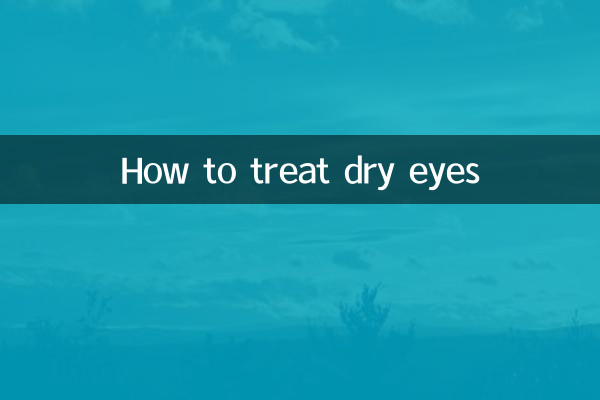How to treat dry eyes
Dry eye syndrome (xerophthalmia) is a common eye disease characterized by symptoms such as dry eyes, fatigue, foreign body sensation, and burning sensation. In recent years, with the popularization of electronic devices and the increase in eye use time, the incidence of dry eye syndrome has increased year by year. This article will combine the hot topics and hot content on the Internet in the past 10 days to give you a detailed introduction to the treatment of dry eye syndrome.
1. Common symptoms of dry eye syndrome

Symptoms of dry eye syndrome vary from person to person, but here are some common signs:
| Symptoms | Description |
|---|---|
| dry eyes | Feeling that your eyes are lacking lubrication or even painful |
| Foreign body sensation | Feeling like there is sand or dust in your eyes |
| burning sensation | Burning or stinging sensation in the eyes |
| blurred vision | Feeling blurry when seeing, especially after using your eyes for a long time |
| Photophobia | Sensitive to light, especially in bright light |
2. Treatment of Dry Eye Syndrome
There are many treatments for dry eye syndrome, the following are some of the most commonly used methods:
| Treatment | Specific measures |
|---|---|
| artificial tears | Use preservative-free artificial tears to replenish tears on the surface of the eye |
| Hot compress | Apply a warm towel to your eyes to stimulate the meibomian glands to secrete oil |
| diet modification | Increase foods rich in Omega-3 fatty acids, such as deep-sea fish and flax seeds |
| Improvement of living habits | Reduce the time you use electronic devices and take a break with your eyes. |
| drug treatment | Use anti-inflammatory drugs or immunomodulators under the guidance of a doctor |
3. Preventive Measures for Dry Eye Syndrome
The key to preventing dry eye syndrome is to develop good eye habits and living habits:
| Precautions | Specific methods |
|---|---|
| Control the time you use your eyes | Every 30 minutes of using your eyes, rest for 5 minutes, look into the distance or close your eyes |
| Maintain ambient humidity | Use a humidifier to prevent the air from getting too dry |
| Wear protective glasses | Wear windproof glasses in windy or dry conditions |
| balanced diet | Eat more foods rich in vitamins A, C, and E, such as carrots, oranges, and nuts |
4. Latest research progress on dry eye syndrome
According to recent hot topics and content, the research and treatment of dry eye disease have the following new developments:
| Research areas | Latest developments |
|---|---|
| stem cell therapy | Study finds stem cells can repair damaged corneal and conjunctival cells |
| New artificial tears | Develop artificial tears that are closer to natural tear ingredients and have longer-lasting effects |
| smart glasses | Some smart glasses can remind users to take a break by monitoring blink frequency |
5. Misunderstandings about Dry Eye Syndrome
There are some common misunderstandings about dry eye syndrome that require special attention:
| Misunderstanding | truth |
|---|---|
| The more eye drops you use, the better | Excessive use of eye drops containing preservatives may worsen symptoms |
| Dry eye syndrome is just a minor problem | Severe dry eye syndrome may cause corneal damage and affect vision |
| Young people don’t get dry eye syndrome | As the use of electronic devices increases, the incidence rate among young people rises significantly |
6. Summary
Dry eye syndrome is a common eye disease, but with proper treatment and preventive measures, symptoms can be effectively relieved. If you feel eye discomfort for a long time, it is recommended to seek medical treatment in time to avoid worsening of the condition. At the same time, developing good eye habits and living habits is the key to preventing dry eye syndrome.

check the details

check the details